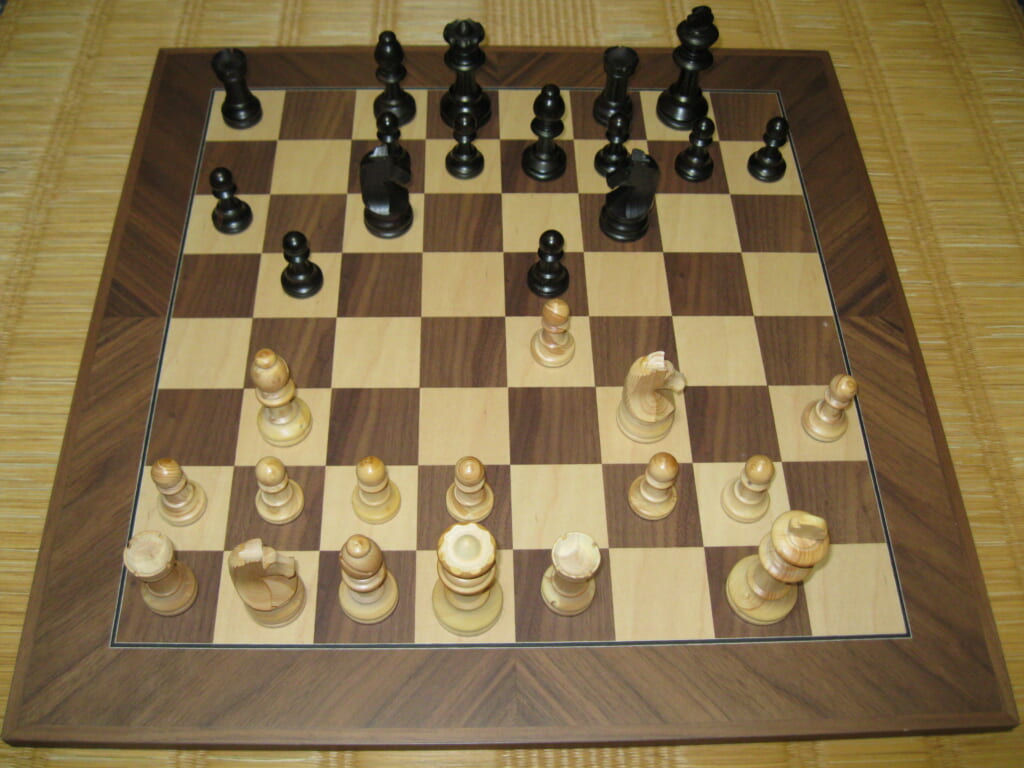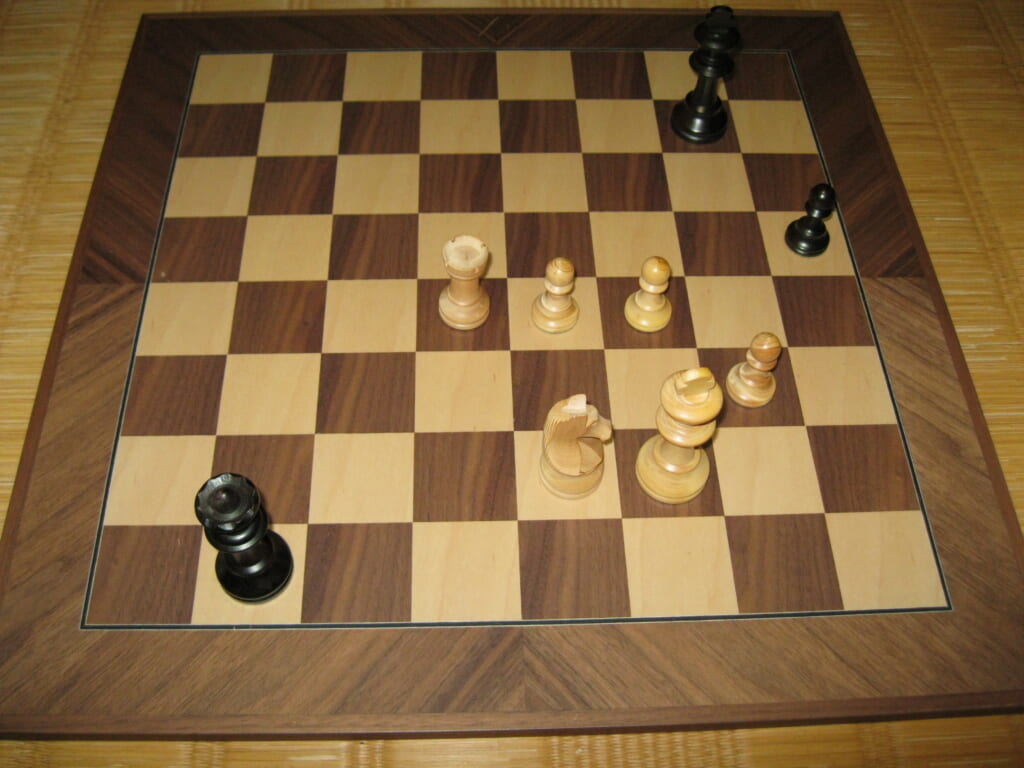
Hello, everyone! Ciao, a tutti!
Welcome to my game.
As you always are, I’m playing my own game, too.
What is the difference between Koryu & Chess?
To think better about this question together, I have the great pleasure to tell you that I’ll show you a bit of Koryu by myself on the next Sunday, if it’ll not be cancelled.
Yes, I’ll be a player on the stage at the Nippon Budokan(日本武道館) on 6th February 2022 for the 45th Japanese Classical Budo Demonstrations (第45回日本古武道演武大会).
This will be officially broadcasted live on YouTube by the Nippon Budokan(日本武道館).
So, I’m happy, if you come and see the official web site of the Nippon Budokan (日本武道館)for the program.
But I have to say it’ll not be the same as a tournament or a competition of Chess.
First of all, there will be no result like Chess, which means win, lose, or draw.
Koryu players on the stage belong to different schools, Ryu-ha(流派), something like, you know, ‘the old Russian Chess School’.
And the members of each Ryu-ha(流派) will show you just only own Art one after another.
Then, I’ll show you what?
My ‘twenty heartbeats’.
The original ‘twenty heartbeats’, which means a short story that Roberto Verganti introduces in his book “Overcrowded”, is as follows: “Long ago, in an indeterminate village in China, a wealthy man commissioned a renowned artist to paint his beloved horse. The years passed and the man, who had paid in advance, wondered why it was taking so long. Finally, old and furious, he went to the painter’s studio to demand his picture. After a discussion, the artist grasped his brush and, in the time of twenty heartbeats, he painted an extraordinary picture of the horse. As the old man turned to leave, enraged by how quickly the portrait was executed, he saw the back of the studio. There lay thousands of sketches of horses, drawings and attempts that the artists had made in preparation for his masterpiece. Then the man understood the struggles, and the value of the result.”
Why does he show us this story?
Because “This story, based on the novel Twenty Heartbeats of Dennis Haseley, invokes an important dimension often forgotten in creative processes: the value of time. Especially when it comes to the creation of new visions. Innovation of meaning is based on reflection rather than ideation. We do not need numerous proposals. In many projects we have conducted, individuals envision three or four (but even one or two may be fine). And filling in an envisioning form as in figure 6.9 may really take twenty heartbeats. What matters is that is they have been reflected upon. Innovation of meaning requires depth rather than quantity. And depth requires time.
Not time in terms of working hours. But time in terms of calendar time. We need time to let thoughts rest; to take a distance from our proposals, let them sediment, and reconsider them later with a fresh perspective.”
By the way, we know how greed Chess commentators (and of course, we ourselves) are for the information, I mean, what’s going on, not only on the board but also even in the inside of players, enough to read their body languages.
Playing against GM Jan-Krzysztof Duda in Tata Steel Chess Tournament 2022 – Round 4, was the reason why GM Shakhriyar Mamedyarov wore the hood of his parka that he felt cold as WIM Fiona Steil-Antoni laughing and saying “I’m not the only one!”? Or he tried to drown out every other noise or every other person in the room and figure out his move to play as GM Robert Hess guessing?
At this point, how about Koryu?
We in Koryu want to give someone (including the opponent) the information about ourselves as little as possible.
So, you’ll not be able to see the back of the stage, I mean, what must be there like the artist’s “thousands of sketches of horses, drawings and attempts that the artist had made in preparation for his masterpiece”.
I don’t know whether you’ll be able to understand our “struggles and the value of the result” or not.
Then, why we in Koryu show you just only own Art, which called Kata(形)?
I think it’s because we know how important such an Art is, by which we can finish a struggle.
“Imagine learning how to play chess from a primer that’s missing a few pages. The pages you have teach you how to set up the board, how to move and capture the enemy pieces, but say nothing about checkmate, nothing about the end of the game. Learning from such a book, you could become competent at calculation and proficient at maneuvering, but you’d have no higher objectives. Without a goal your play would be aimless. You might be a master tactician, but you’ll have no sense of strategy.”
This is what Garry Kasparov shows us in his book “How Life Imitates Chess”.
And at this point, GM Merab Gagunashvili (GEO) made a very brave and ambitious try against his opponent, who was the defending World Champion Magnus Carlsen at Board 1, Round 1 – Day 1 in Rapid World Championship 2021.
According to the commentary by GM Jon Ludvig Hammer & GM Irina Krush, Magnus with white played the Spanish Opening (Ruy Lopez) that Ian Nepomniachtchi used against Magnus during the World Championship 2021, just a little month ago, and Gagunashvili with black answered the same opening that Magnus himself used at that time, even though this time was not a classical game.
Yes, and I find there were two tiny differences.
One was that Magnus’ white castled Rook stayed at f1 waiting for his Queen moving to a2 to be on a-file with his another Rook and Queen together, but Ian moved it to e1 for his move 6 in GAME 7.
Another was that Magnus moved Queen side Bishop to d2 for his move 12, but Ian’s had stayed long in GAME 7.
Did Gagunashvili anticipate Magnus’ unusual move like Queen to b1 for his move 14 which can be done because of that move 12 by Bishop?
Eventually this Rapid game ended by a lesson of pressure, pressure, pressure by Magnus whose Bishop dominated Gagunashvili’s Knight as Hammer’s expectation, although GAME 7 was Rook endgame to be a draw.
Certainly Gagunashvili had a strategy, but heavily struggled at the endgame.
And to be honest, this is a big reason why we in Koryu want to give someone (including the opponent) the information about ourselves as little as possible, because someone who steals the Art what we can use now becomes obliviously a terrible opponent in future.
You know, we, the ordinary cannot be like Magnus Carlsen.
Anyway, to gain a chance of such a lesson by ourselves, we need a book like “The Art of the Checkmate” written by Georges Renaud & Victor Kahn, that whispers us as follows: “When a move is about to be played there is no guardian angel to whisper: “Careful, friend. There is a forced mate in four moves; look out for it.” The aim of this book is to impart to you the information which will enable you to miss no opportunity of mating in typical positions.”
Thankfully, the book gives us the top-secret information about what is a typical checkmate like ‘Anastasia’s Mate’, that once Top3 in the world GM Nigel Short was aware more than 5 times on the broadcast of FIDE World Cup 2021.
Now a typical checkmate seems like Kata(形) of Koryu, and of course, there is no guardian angel to whisper: “Careful, friend.” at the moment when we need self-defense.
Instead of discussing about Koryu, here we have to listen to the whisper of our guardian angels from the book “The Art of the Checkmate” more like this: “One thing can be said, however: An experienced player feels instinctively that positions, such as the one in the diagram, are full of latent possibilities. Since all the moves are forced and since there are no variations to complicate the line of play, it is relatively easy, with some practice, to foresee the consequences of the sacrifice and to calculate the number of moves necessary to bring about the mate. And even if he is not able to foresee the whole mating process, the good player will “feel” that the King is about to embark on a journey from which it will not come back.”
And after showing the brilliant mate in 8 moves which Edward Lasker announced in the famous game against Sir George A. Thomas, London, 1912, the same book shows secrets to us as follows: “This death march of the King seems amazing to the beginner. But, since all the moves are forced, the combination can be calculated accurately without a considerable mental effort. Here also, no definite rule can be laid down. The idea is to snatch the King from its initial square and by checking it constantly to lead it to the fatal mating square. It is a question of rapid judgment, imagination and practice. To be able to mate in a definite position, two conditions are required: 1) To be aware of a possible mate. 2) To be able to carry it out.”
I think such an insight is quite similar to Koryu, I mean, if we can translate ‘King’ to ‘center of gravity’ or ‘balance’.
Anyway, I know I’ll be ‘underdog’ or ‘a target’, as like GM Judit Polgar and IM Jovanka Houska mention GM Aryan Tari who is Norwegian No.2 chess player and missed the opportunity to win the classical game with black against Magnus in Round2 of 2021 Norway Chess, looking back to their own experiences on the broadcast of it.
Because he is not a man like GM Alireza Firouzja, “Just be in the game every moment of it.” is the advice from Judit before Armageddon game in Round 2.
To show you my ‘twenty heartbeats’, I’ll be there as a member of Hontai Yoshin-ryu Jujutsu(本體楊心流柔術).
To tell the truth, I need the time of just 2 or 3, at most 10 heartbeats for each Kata(形) of Jujutsu(柔術).
So, don’t miss it!
Thank you, best regards.
Grazie, buona partita.





